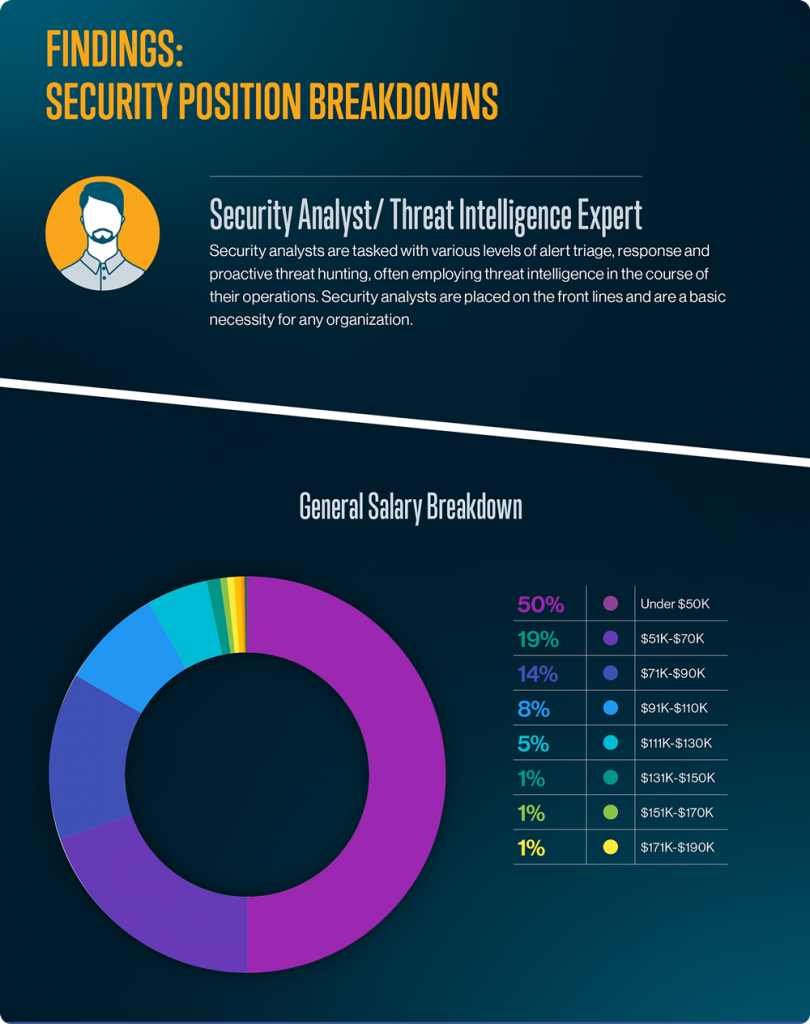The 2020 Cybersecurity Salary Survey was an online survey published to gain insight into the details related to cybersecurity compensation. It was completed by over 1,500 security professional respondents. Today you can access the aggregated and analyzed 2020 Cybersecurity Salary Survey Results and gain insight into the main ranges and factors of current cybersecurity salaries.
The data enabled the conductors of the survey to form a detailed salary profile for five security positions: Security Analyst/Threat Intelligence Specialist, Security/Cloud Security Architect, Penetration Tester and Security Director/Manager. This profile includes both the range and composition of salaries for these positions, as well as the relative impacts of organizational (geolocation, industry, etc.) and individual (gender, experience, certification) factors.
Using the survey results (download here), any individual can go to the section relevant to his or her role and learn how their salary benchmarks against the respective range and factors and then utilize this knowledge in any decision making that involves a compensation aspect.

Apart from this, the data collected both validated and refuted some previous assumptions regarding the relative weight of factors such as geolocation, certification, and others. Here is an assortment of interesting facts:
- Geolocation Matters. Security Analysts in NAM get a significantly higher salary than their counterparts in the EMEA and APAC, with more than 80% earning between 71K and 110K, in contrast to less than 35% in EMEA and 21% in APAC.
- A degree doesn’t guarantee higher compensation. All analyzed positions feature a similar salary range distribution for both employees with or without a degree in computer science or related engineering field.
- Banking and Finance lead with payment range and distribution for both management and individual contribution positions.
- Quality beats experience. Surprisingly, across all analyzed positions, we found both individuals with little experience at the top of the payment curve and seasoned veterans at its bottom.
- Pivoting pays. Individuals that pivoted from an IT position to a cybersecurity position earn more than their peers that started out in cybersecurity.
- Bonuses are common practice. With the exception of security analysts, all other positions include periodic bonuses with annual 1%-10% as the leading pattern.
- Women are hard to find. There is a significant shortage of women in security positions. The highest percentage is in the 20-29 age group with 6% in overall positions.
- Women in management. Within the five analyzed positions, the highest percentage of women were found in the security director/manager position at 10%.
So read the survey results, get to know how your salary rates, and feel free to explore the results further to gain insights of your own!











